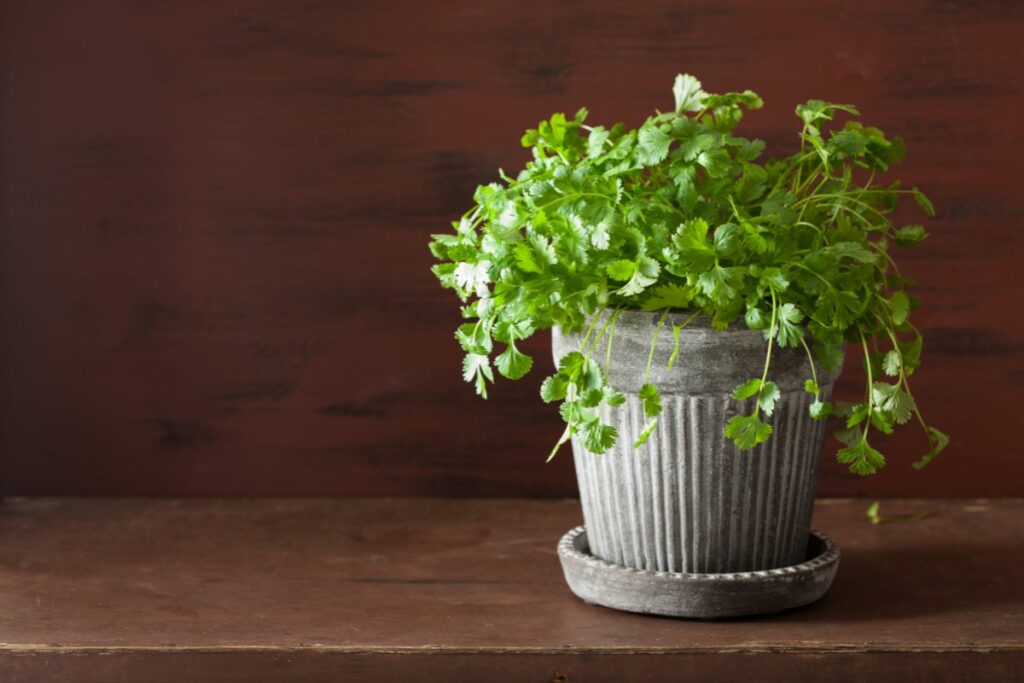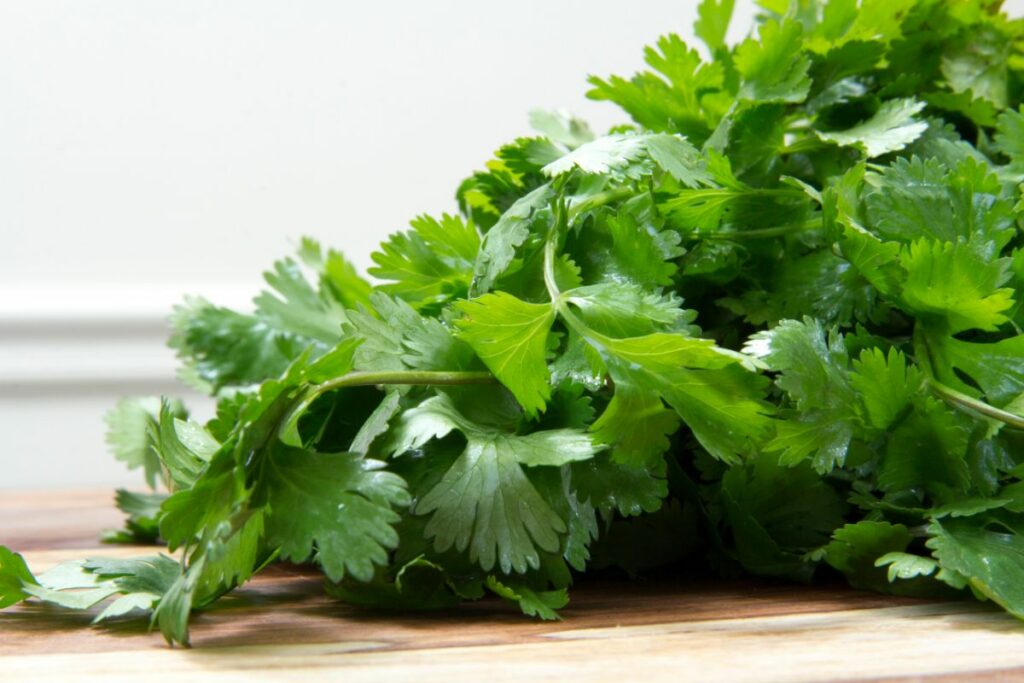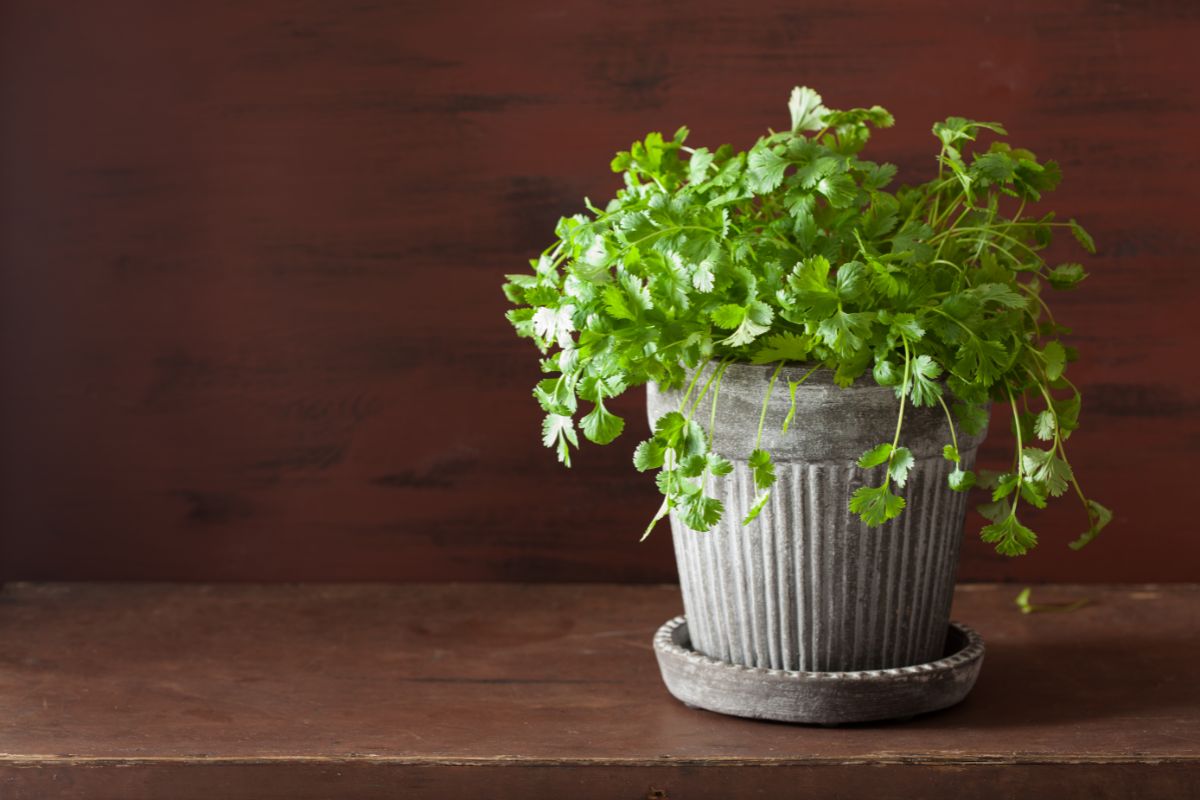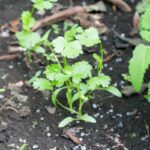If you’re looking to add a burst of fresh, zesty flavour to your dishes, cilantro is undoubtedly a must-have herb in your kitchen. Known for its vibrant green leaves and distinct aroma, cilantro can elevate the taste of countless recipes.
If you’ve recently bought a bunch of cilantro but don’t need to use all of it, you might be wondering how simple it would be to grow your own herbs from it.

While it’s relatively easy to grow cilantro from seeds, I’m here to introduce you to an even easier, fuss-free method: growing cilantro from cuttings.
In this guide, I’ll walk you through the steps to successfully propagate cilantro from cuttings. Whether you’re an experienced gardener or just getting started, this approach is bound to make cultivating cilantro a breeze.
Why Choose Cuttings?
Growing cilantro from cuttings has several advantages, making it an attractive option for anyone wanting to be more sustainable. Here are a few reasons why you might want to opt for this method.
Faster Results
Growing cilantro from seeds can take a bit of time, as you’ll need to wait for the seeds to germinate and grow into seedlings. With cuttings, you can skip this waiting period and get straight to growing mature cilantro plants.
Repurpose Leftovers
Have a bunch of cilantro in your fridge that you’re not going to use before it goes bad? Instead of letting it wilt away, use it to create and propagate more cilantro plants for your garden.
You know I’m an eco gal, so I love this option!
Convenience
Cuttings are relatively easy to handle, making this method a hassle-free way to expand your cilantro supply.
Plus, it’s a great way to ensure an ongoing harvest of this delicious herb.
Growing Cilantro From Cuttings
Step 1 – Gathering Your Materials
Before you get started, it’s essential to gather the necessary materials. Here’s what you’ll need:
- A healthy cilantro plant
- Clean scissors or pruning shears
- A small pot of containers with drainage holes
- High-quality potting mix
- Water
Step 2: Select a Healthy Cilantro Plant
Choose a mature cilantro plant that looks healthy and still full of life. Avoid plants that are wilting or have any obvious signs of damage or disease, as these are unlikely to germinate successfully.
Step 3: Take Cuttings
Using your scissors or pruning shears, cut 7.5-10 cm (3-4 inch) sections from the top of the cilantro plant.
Make sure that each cutting has at least a few leaves and a stem. You can take multiple cuttings if you want to propagate more plants.
Step 4: Prepare The Pot
Fill your small pot or container with high-quality potting mix, leaving about 2-3 cm (1 inch) of space at the top.
Ensure that the pot has drainage holes to prevent waterlogging. High-quality potting mix can be bought from any garden shop, or you can mix it up at home by using 70% garden soil (with any debris and weeds removed) with 30% organic compost.
Step 5: Plant The Cuttings
Gently poke holes in the potting mix to accommodate the cilantro cuttings. Plant each cutting in a hole that is another 2-3 cm (1 inch) deep into the soil. Press around the stem gently to provide some stability.
Step 6: Water Thoroughly
After planting the cuttings, give them a good watering. Ensure that the soil is evenly moist but not soggy. Proper water is essential for the cuttings to establish roots.
Step 7: Provide Adequate Light
Place your pot in a location that receives indirect sunlight or partial shade. Cilantro prefers cooler temperatures and can become stressed in intense heat. A spot with filtered sunlight is ideal.
Step 8: Maintain Moisture
Keep an eye on the soil moisture level and water the cuttings when the top 2 cm of soil feels dry. Avoid overwatering, as cilantro can be sensitive to waterlogged conditions.
Step 9: Fertilise Sparingly
Cilantro doesn’t require heavy fertilisation. You can use a balanced, water-soluble fertiliser diluted to half-strength once every 4-6 weeks during the growing season.
Be cautious not to over-fertilize, as this can negatively impact the flavour of the leaves.
Step 10: Harvest And Enjoy
In just a few weeks, your cilantro cuttings will establish roots and start growing. You can begin harvesting the leaves once the plant has reached a decent size. Remember not to take more than one-third of the plant at a time.

Troubleshooting Tips For Growing Cilantro From Cuttings
While growing cilantro from cuttings is relatively straightforward, here are some common issues you may encounter and how to address them:
- Wilting: If your cilantro cuttings start to wilt, ensure that they are getting the right amount of water. Adjust your watering schedule accordingly, keeping the soil consistently moist but not soggy.
- Yellowing Leaves: Yellowing leaves can be a sign of nutrient deficiency. Consider fertilising your cilantro with a balanced, water-soluble fertiliser as mentioned earlier.
- Pests: Keep an eye out for common pests like aphids and spider mites. You can use natural remedies like neem oil or insecticidal soap to deter these little creepy crawlies. This isn’t usually too much of an issue when growing this herb indoors, but it’s still worth being aware.
- Bolting: Cilantro is known to bolt (produce flowers and seeds) when exposed to high temperatures. If this happens, it may be time to start fresh with new cuttings in a cooler season.
Final Thoughts
Growing cilantro from cuttings is an easy and efficient way to ensure a steady supply of this versatile herb in your kitchen. With just a few simple steps, you can enjoy the fresh, aromatic goodness of cilantro in your culinary creations.
Remember to select healthy plants, provide the right growing conditions, and be patient.
With a little care and attention, your cilantro cuttings will thrive and reward you with a herby harvest that’s ready to take your dishes to the next level.
So! Grab your scissors, get your cilantro cuttings ready, and start growing your cilantro garden today. Happy gardening!
- Can You Grow Bell Peppers Indoors? A Guide For New Gardeners - November 14, 2023
- Composting Basics: Can You Compost Mushrooms? - November 6, 2023
- A Gardener’s Guide To Growing Carrots In Raised Beds - November 1, 2023




